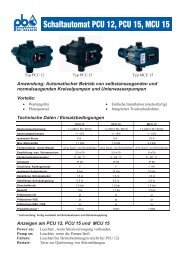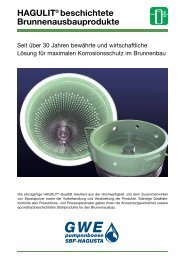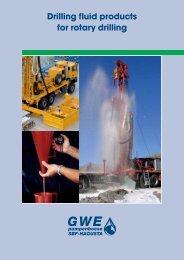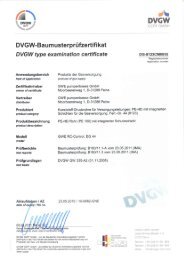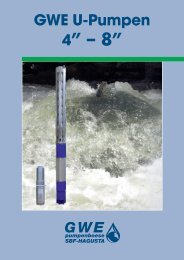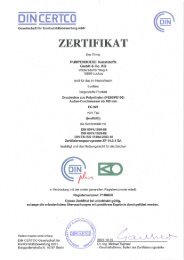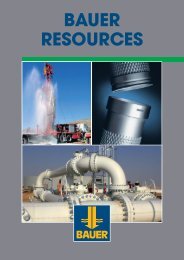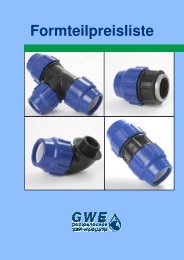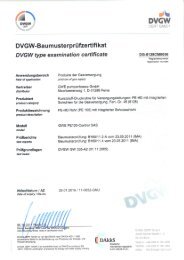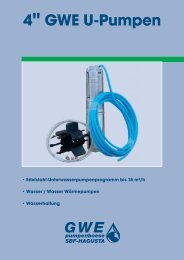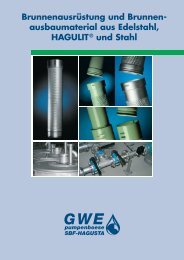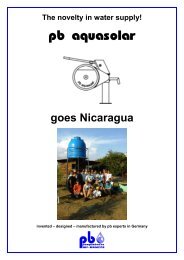Sealings for well construction - GWE German Water and Energy GmbH
Sealings for well construction - GWE German Water and Energy GmbH
Sealings for well construction - GWE German Water and Energy GmbH
Create successful ePaper yourself
Turn your PDF publications into a flip-book with our unique Google optimized e-Paper software.
S<strong>well</strong>ing capacity in fresh <strong>and</strong> salt water<br />
Fig. 1 Quellon HD dry / in deionised water / tap water / -<br />
salt water 10 g NaCl/l<br />
Geophysical detection of annulus backfilling<br />
2<br />
Clay materials that demonstrate s<strong>well</strong>ing capacities < 30%<br />
when placed freely under water, <strong>and</strong> hence are smaller than<br />
the pore volume of the clay filling, should only be used <strong>for</strong><br />
<strong>well</strong> sealing under certain conditions. In such cases there is<br />
a possibility that air pockets may remain in the filling, particularly<br />
at the boundaries (borehole wall/casing surface)<br />
which will then result in increased permeability. Large<br />
hydraulic gradients will consequently cause erosion that will,<br />
in the end, lead to the total failure the barrier, resulting in the<br />
fillers being rearranged above the seal.<br />
It is only possible to achieve effective borehole seals using<br />
low s<strong>well</strong>ing clay in holes of at least Ø > 400 mm due to the<br />
large vertical loads which result from the pouring process.<br />
For reasons previously mentioned, we recommend that only<br />
bentonite-type materials are used <strong>for</strong> smaller<br />
borehole/annulus diameters.<br />
Source Well Logging: BLM Storkow <strong>GmbH</strong>



